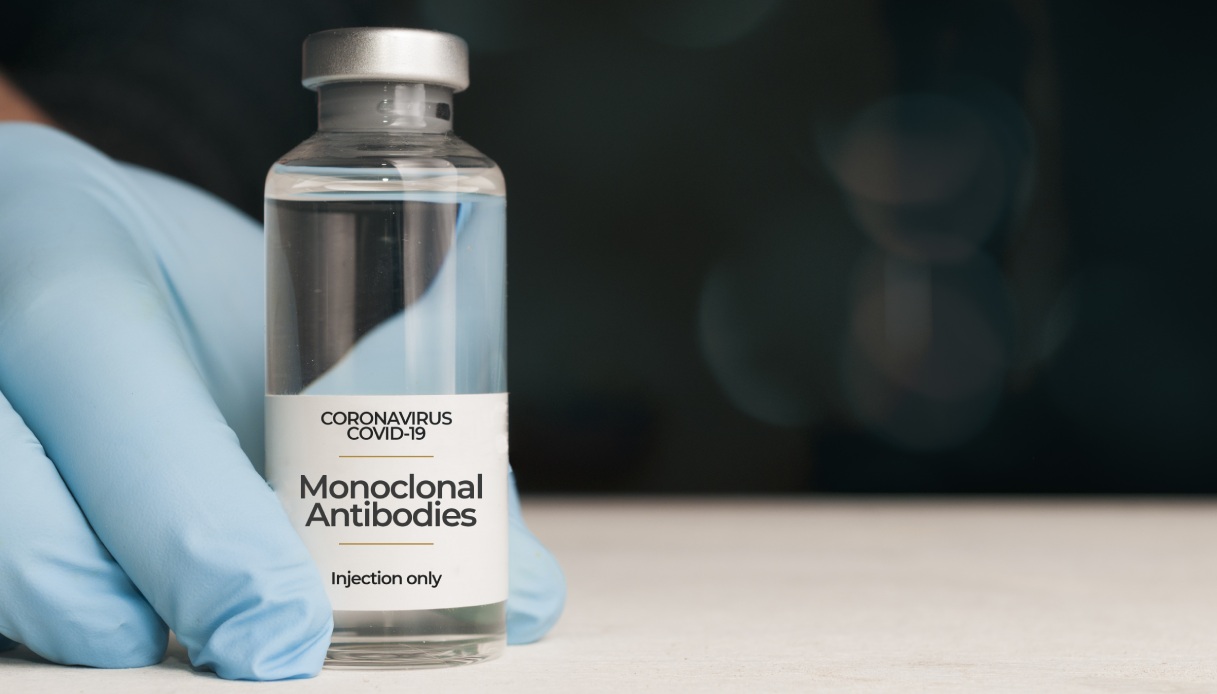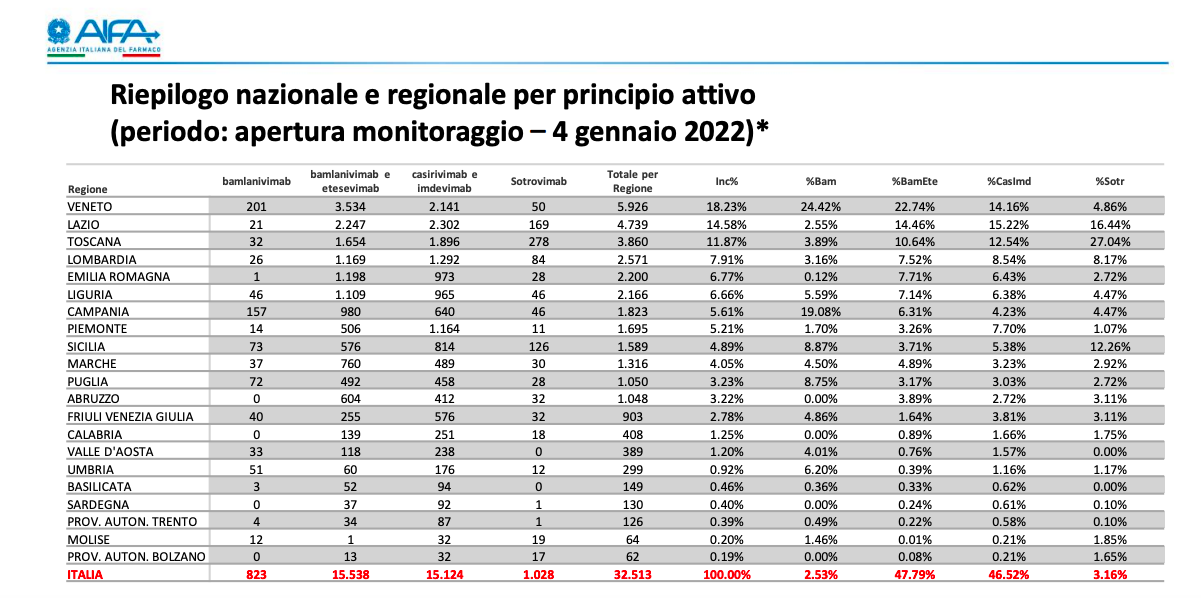Here are the regions that use monoclonals the most. Aifa report

Facts, numbers and insights on monoclonals in Italy (with the ranking of the regions). What emerges from the Aifa monitoring
After the news of their use to treat Professor Massimo Galli, former head of Infectious Diseases at the Sacco Hospital in Milan, was spread, monoclonal antibodies are back in the spotlight. In Italy: according to the 40th report of the Italian Medicines Agency (Aifa), in the last 7 days the demand for these drugs has increased by 11.23%. Here are the regions where they are used the most.
THE AUTHORIZED MONOCLONALS
Our country has authorized the association of monoclonal antibodies bamlanivimab-etesevimab of the pharmaceutical company Eli Lilly (although it has not yet received the approval at European level), while the authorization of bamlanivimab as monotherapy has been revoked.
The use of sotrovimab, called Xevudy, from the Gsk company and the casirivimab-imdevimab association, called Ronapreve, from the pharmaceutical company Regeneron / Roche is also allowed.
On the other hand, regdanvimab (Regkirona) of the pharmaceutical company Celltrion Healthcare Hungary Kft is not yet authorized in Italy, unlike what is claimed by the European Commission on the opinion of the European Medicines Agency (Ema).
HOW MANY MONOCLONALS WERE ADMINISTRATED
The Italian structures that can prescribe monoclonal antibodies are 241 and from 10 March 2021 to 5 January 2022 32,513 have been prescribed, according to the Aifa monitoring registers office.
Of the approximately 32,000 total patients, 15,538 were administered the mix of bamlanivimab and etesevimab; to 15,124 the association of casirivimab and imdevimab; 1,028 sotrovimab and 823 bamlanivimab alone.
WHICH REGIONS USE THEM MORE OR LESS
It is no news now that Veneto is the Italian region to make more use of monoclonal antibodies. At the top of the ranking with 5,926 patients, followed by Lazio with 4,739 and Tuscany with 3,860. These numbers are very distant from the Autonomous Province of Trento (126) and from Molise and the Autonomous Province of Bolzano which close the ranking with 64 and 62 patients respectively.
Comparing, however, the number of prescriptions of monoclonal antibodies between the week from 29 December 2021 to 4 January 2022 and the previous one, it is observed that Lazio and Piedmont are the two regions to have prescribed the most. In Lazio there was an increase of 16.5% and in Piedmont of 55.74%, while Veneto – in third place – recorded a decrease of 6.63%.

A MONOCLONAL VS OMICRON
If vaccines remain the first ally in the fight against the virus, one antibody in particular would also seem to be effective against the Omicron variant, for which a specific vaccine is not yet available. It is about sotrovimab (Xevudy) which, as recently recalled by the virologist Guido Silvestri , Professor & Chair at Emory University, "in addition to the vaccination campaign, it will be important to use antivirals effective against Omicron (such as the Paxlovid pill and the monoclonal Sotrovimab ), especially in 'at risk' subjects (aged over 65 and with predisposing diseases) ".
AN IMPORTANT SOLUTION BUT NOT FOR EVERYONE
Even Professor Galli , speaking of his personal experience, explained that if he had not had the three doses of the vaccine he would have been a "perfect candidate for a negative evolution of the disease and for hospitalization". Then he clarified that the monoclonal antibodies, received in the hospital, were recommended for his risk factors: "a bad pulmonary embolism in 2019, a history of significant asthma, a fluttering blood sugar".
And, in fact, this type of treatment is usually reserved for certain situations. Sotrovimab (Xevudy), for example, has been authorized by the EMA's Committee for Medicinal Products for Human Use (CHMP) for adults and adolescents (from 12 years of age and weighing at least 40 kg) who do not require supplemental oxygen therapy and who are at increased risk of progressing to severe disease.
THE EXCEPTION OF VENETO AND THE DIFFICULTIES
Veneto, according to reports to Avvenire by Evelina Tacconelli, full professor of infectious diseases and director of the infectious diseases clinic of the university hospital of Verona, declared that the region "has expanded the criteria for selecting patients to be treated".
Tacconelli then recalled some limitations in administering the treatment: "it is essential that the therapy is carried out within 72 hours of the onset of symptoms […] dedicated clinics are needed, each patient must be informed, examined, and after an hour of infusion keep him under observation another hour … We manage to do 15-20 a day, including Saturdays and Sundays ”.
For all these reasons, the professor explained how the selection of patients takes place: "we select those who have at least one risk factor, even just age, or an important comorbidity such as severe hypertension, diabetes, dialysis, a tumor … Surely the rapid administration of the drug saved the lives of the vaccinated in fragile populations – oncologists, transplant recipients, etc. – which unfortunately have an extremely weaker response to the vaccine than the immunocompetent and may be positive ".
This is a machine translation from Italian language of a post published on Start Magazine at the URL https://www.startmag.it/sanita/ecco-le-regioni-che-utilizzano-di-piu-i-monoclonali-report-aifa/ on Tue, 11 Jan 2022 09:59:58 +0000.
